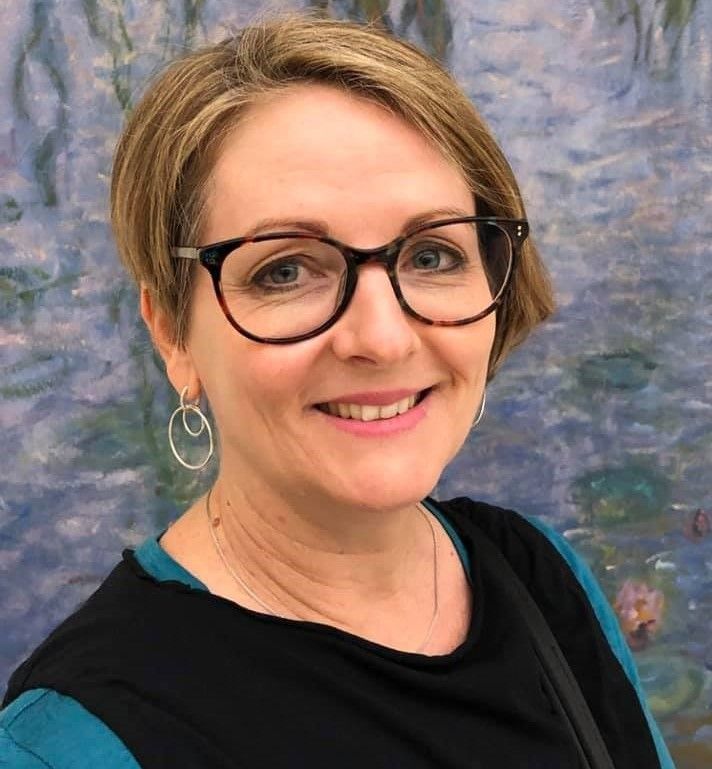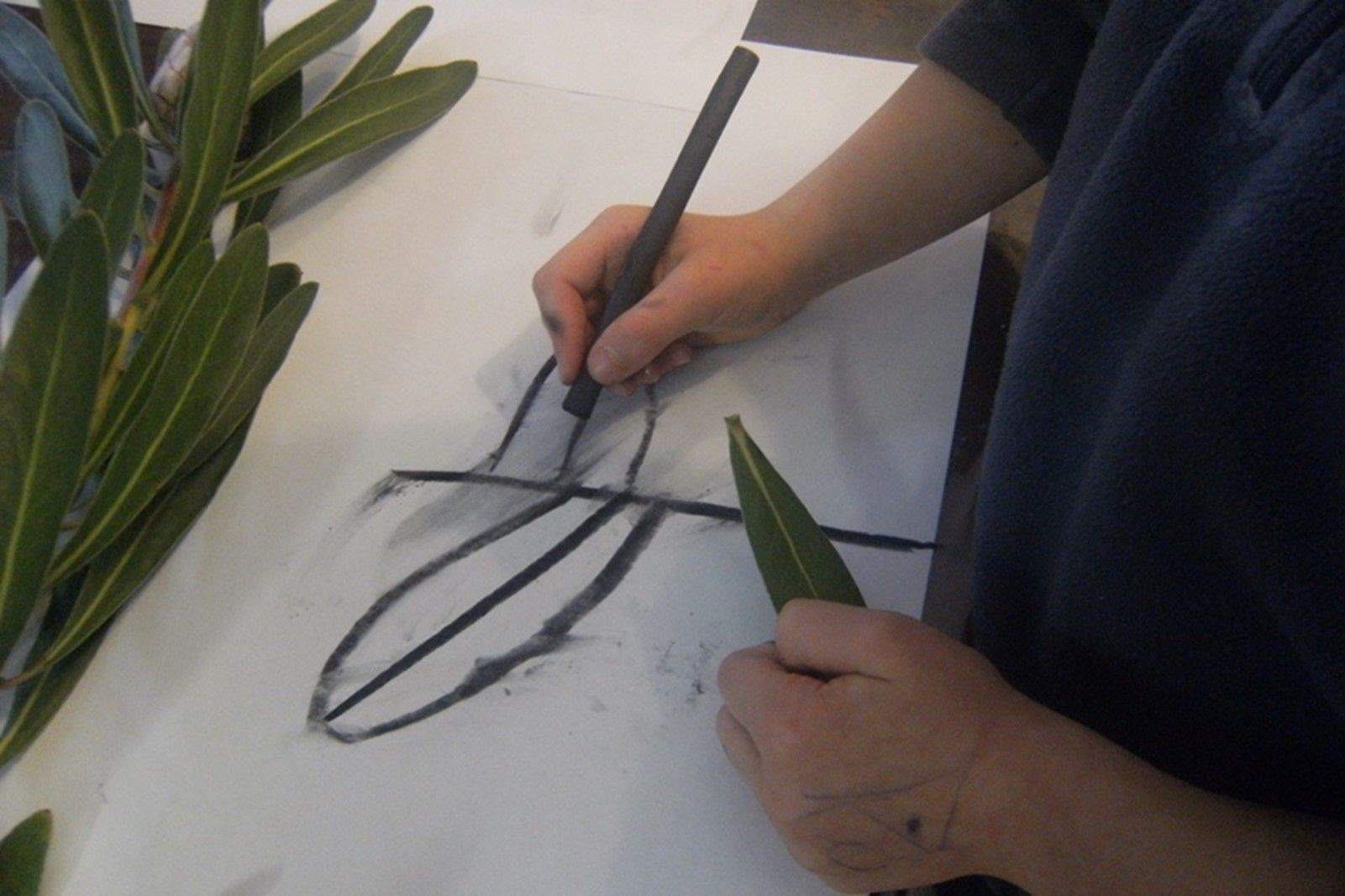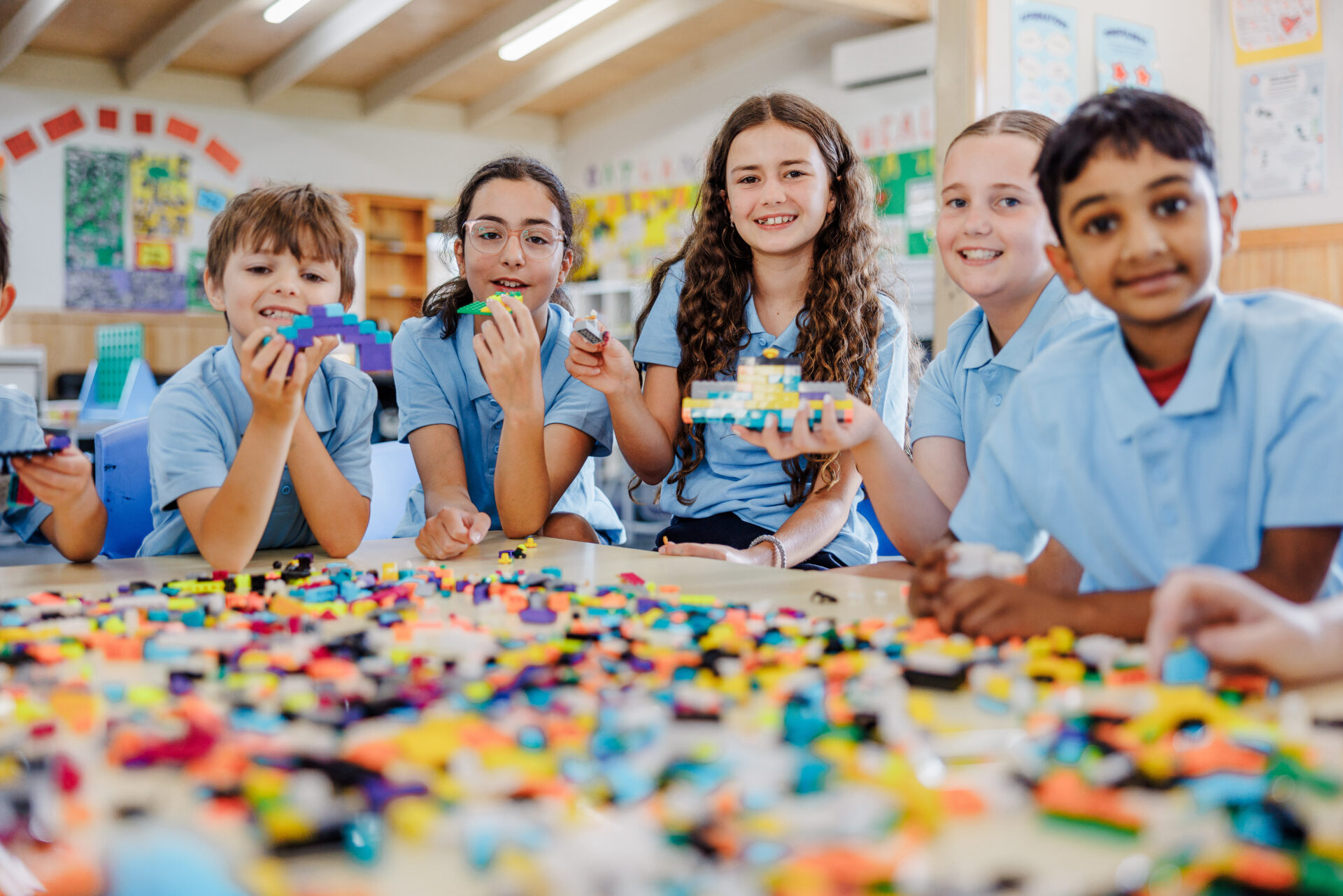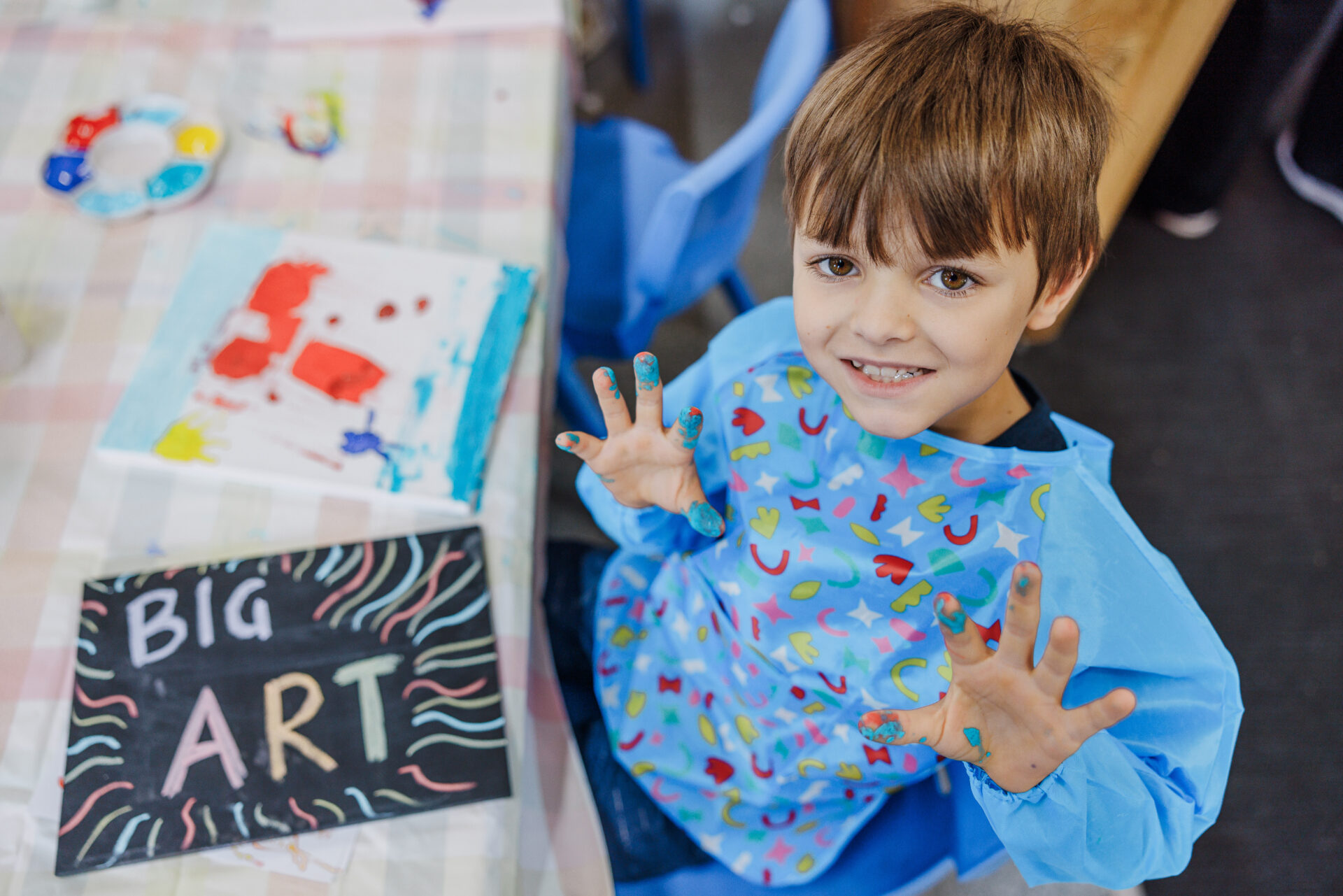By Dr. Gai Lindsay – University of Wollongong
“All people – and I mean scholars, researchers and teachers, who in any place have set themselves to study children seriously – have ended up by discovering not so much the limits and weaknesses of children but rather their surprising and extraordinary strengths and capabilities linked with an inexhaustible need for expression and realisation” (Malaguzzi, 1998, p.78).
The quote above, written by one of the foundational teachers from the world-renowned educational project in Reggio Emilia in Italy, has inspired my 30+ year career as a teacher, researcher and academic and my passion for arts education. My research focuses on the visual arts skills, knowledge and self-efficacy of the adults who teach and care for children. I aim to better understand educators’ confidence to plan for and implement quality visual arts experiences with children so that children can be well supported to engage in, make meaning and communicate through rich visual arts experiences. My research confirms that even though educators generally believe visual arts experiences are educationally valuable, children potentially miss out on opportunities to express their ideas through the ‘languages’ of visual arts when the adults in their lives lack the confidence and knowledge required to support them (Lindsay, 2016, 2021).
When children make art and play with visual arts materials, they have the opportunity to respond to their world to visually communicate, explain, explore, experiment, emote and express (Roy et al., 2015). In fact, whether children are pre-literate, experience learning challenges or prefer visual and active learning styles, artmaking can be positioned as a first language, enabling children to effectively express their ideas, feelings, capabilities and preferences to others (McArdle & Wright, 2014). The arts are equally important to children’s learning and development as other learning domains such as numeracy, science and literacy (Wright, 2003; McClure, 2011). Indeed, McArdle (2016, p.10) suggests “art can create new knowledge that matters.”
Such ideas feature in the educational approach of the Reggio Emilia educational project. Instead of relegating artmaking to Friday afternoons as a fun activity to fill in time after ‘real learning’ has happened, the arts are valued as a visual language whereby both children and adults collaboratively engage in arts experiences to construct knowledge and foster children’s cognition, problem-solving, risk-taking and communication across all learning domains. When the arts are centralised in the curriculum, children are respected as active protagonists in learning experiences that empower them to explore, investigate and learn through the “hundred languages” (Cooper, 2012).
The Poem, “No Way: The hundred is there” written by Malaguzzi, advocates for children’s right to engage fully in rich, holistic, playful and expressive learning and demands that adults empower and extend children’s learning opportunities through all of the senses rather than limiting children’s potential
The child
is made of one hundred.
The child
is made of one hundred.
The child has
a hundred languages
a hundred hands
a hundred thoughts
a hundred ways of thinking
of playing, of speaking.
A hundred always a hundred
ways of listening
of marveling of loving
a hundred joys
for singing and understanding
a hundred worlds
to discover
a hundred worlds
to invent
a hundred worlds
to dream.
The child has
a hundred languages
(and a hundred hundred hundred more)
but they steal ninety-nine.
The school and the culture
separate the head from the body.
They tell the child:
to think without hands
to do without head
to listen and not to speak
to understand without joy
to love and to marvel
only at Easter and Christmas.
They tell the child:
to discover the world already there
and of the hundred
they steal ninety-nine.
They tell the child:
that work and play
reality and fantasy
science and imagination
sky and earth
reason and dream
are things
that do not belong together.
And thus they tell the child
that the hundred is not there.
The child says:
No way. The hundred is there.
By Loris Malaguzzi (translated by Lella Gandini)
This ‘hundred languages’ ideal advocates for the human right to make and express meaning in multiple ways through encounters with “many types of materials, many expressive languages, many points of view, working actively with hands, minds, and emotions, in a context that values the expressiveness and creativity of each child” (Reggio Children, 2014).
Yet, if the adults in children’s lives do not speak the languages of the visual arts and only present children with limiting, structured, adult-driven template activities, children miss out on the opportunity to engage in rich arts-centred experiences that motivate learning, support visual communication and enrich their creative potential. Educators and parents would never abdicate the responsibility to teach children to read and write because they personally lacked confidence with reading. Or, if a teacher personally lack confidence with mathematics, they don’t decide not to teach addition and subtraction in the hope that children will work it out on their own.
So, what should parents and educators do if they are not sure how to support children to learn the languages and vocabulary of the visual arts?
- Approach learning in the arts just as you would when teaching children to read and write.
- In the domain of literacy, educators encourage name recognition, model writing skills, familiarise children with concepts of print and provide early experiences to strengthen hands and arms and introduce words and sounds (McArdle, 2005).
- Honour children’s interests, strengths and rights and believe they are capable to learn authentic arts processes in partnership with you!
- Put away the idea that you must be an expert artist before being able to engage in arts methods and playful encounters with arts materials.
- Welcome opportunities to learn through play, trial and error.
- Reject the idea that artworks must always end in a finished product.
- Use the materials and processes of artmaking as the ‘vocabulary’ of the visual arts language. Play with the marks, materials, shapes, colours and lines. Practice the techniques and processes (and if you don’t know how, a simple search on the internet will provide lots of guidance and instruction!).
In conclusion, Dahlberg and Moss (Eds. in Vecchi, 2010, p.xxii) remind us that education which focuses on the aesthetic dimension and visual languages is a “source of hope for all those who believe in the possibility of an affirmative and inventive pedagogy” that is “open to children’s potential…a pedagogy that finds joy in the unexpected, dares to follow projects in motion without knowing where they may lead, always prepared for surprise and risk; a pedagogy that adds to the world rather than subtracting as is all too common in education. In a world obsessed with quantification, reductionism, normalization and predetermined outcomes, this pedagogy gives cause to believe in the world again.”
Dr. Lindsay is a partner in Camp Australia’s Big Art Comp, providing valuable resources for families and being on the judging panel for submissions into this initiative. The competition is open until 27 March
References
- Cooper, M. (2012). Is Beauty a Way of Knowing? In C. Edwards, L. Gandini, & G. Forman (Eds.), The Hundred Languages of Children: The Reggio Emilia Experience in Transformation (pp. 295-302). Praeger.
- Roy, D., Baker, W., & Hamilton, A. (2015). Teaching the Arts: Early Childhood and Primary Education. (2nd ed.). Cambridge University Press.
- Lindsay, G. (2016). Do visual art learning experiences in early childhood settings foster educative growth or stagnation? International Art in Early Childhood Research Journal, 5(1). http://artinearlychildhood.org/journals /2016/ARTEC 2016_Research Journal_1_Article_2_Lindsay.pdf
- Lindsay, G. (2021). Visual Arts Pedagogy in Early Childhood Contexts: The baggage of self-efficacy beliefs, pedagogical knowledge and limited pre-service training. Australasian Journal of Early Childhood. 41(6). 80-92. DOI: https://doi.org/10.1177/1836939120979061
- Malaguzzi, L. (n.d.). No Way: The hundred is there. https://www.reggiochildren.it/en/reggio-emilia-approach/100-linguaggi-en/
- McArdle, F. (2005). What if…? Art as language in early childhood. Every Child, 11(2), 6-7.
- McArdle, F. (2016). “Art Education” in the early years: learning about, through and with art. International Art in Early Childhood Research Journal. 5(1), (n.p). Retrieved from http:/artinearlychildhood.org/journals/2016/ARTEC_2016_Research_Journal_1_Article_3_McArdle.pdf
- McArdle, F., & Wright, S.K. (2014). First Literacies: Art, creativity, play, constructive meaning-making in Barton, G. (ed.), Literacy in the Arts: Retheorising Learning and Teaching, Springer International Publishing. doi:10.1007/978-3-319-04846-8_2.
- McClure, M. (2011). Child as totem: Redressing the myth of inherent creativity in early childhood. Studies in Art Education, 52(2), 127-141.
- Reggio Children. (2014). The Reggio Emilia Approach. http://www.reggiochildren.it/identita/reggio-emilia-approach/?lang=en
- Vecchi, V. (2010). Art and Creativity in Reggio Emilia: Exploring the role and potential of ateliers in early childhood education. Routledge.
- Wright, S. (2003). The Arts, Young Children, and Learning. Pearson Education.

Dr. Gai Lindsay is a lecturer in The Early Years degree at the University of Wollongong. Her PhD explored the visual arts beliefs and teaching practices of educators in early childhood settings. Her research and teaching work focuses on visual arts education, arts-based learning and John Dewey’s philosophies of education and art. She is currently engaged on the advisory board of the Bright Start Foundation International Voices of Children initiative. Before entering academia, Gai worked for more than twenty years as a preschool teacher, director and early childhood consultant. Her goal is for all children and adults to experience the joy and satisfaction of meaningful ark-making and quality visual arts learning experiences.





